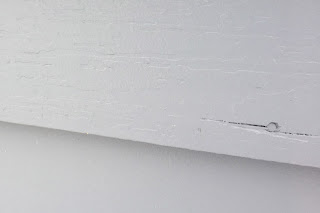 |
| Advertisement for a furnace from an 1889 Palliser and Palliser plan book. |
Generally speaking, houses lose heat in two ways. One is radiation. Radiation is the process of emitting energy via waves. When we stand in the sun and feel its warmth on our face, we are experiencing radiation. Houses radiate heat through their walls. Another way houses loose heat is convection, which is the movement of warm and cold air. Convection is commonly known as drafts and is caused by gaps in the building envelope such as loose windows or spaces around vents or electrical conduit.
I recommend taking a three stage process when you are looking to improve the thermal performance of your home
ONE: The first stage is dealing with convection/drafts. Believe it or not, this is how many older homes loose the most heat. It is also what causes the most discomfort. The first place to look is around doors and windows. The thermal efficiency of historic windows is quite good IF they are tightly sealed and you have storm windows. Make sure the window sashes do not rattle or are loose in the window frames. If they are loose make sure the window stop hasn’t moved or been damaged. Make sure the sash locks are placed properly. One inexpensive way to seal windows is rope caulk. Rope caulk is a flexible caulk that you buy in rolls that can be used to seal gaps around windows and can be easily removed in the spring. Old-time spring bronze is a proven way to seal exterior doors. Other places to look for gaps are in the foundation and between the foundation and sill, around electrical conduits, electrical outlets and plumbing and vent pipes. These gaps can be sealed with caulk or foam. Fireplace flues can be especially problematic and should always have their dampers closed when not in use.
TWO: The second stage is attic insulation. Heat rises within the building envelope and having adequate attic insulation will ensure heat energy remains in your home and not escape through our attic. In short, your house needs to wear a hat. Insulation requirements vary region by region, but zones 5 through 8 typically require an insulation value of up to R60. This is also important because attic insulation will keep your roof cold, meaning snow will not melt and cause ice dams. Ice dams can be very destructive and are particularly troublesome on older homes with elaborate trim and complex roof lines with many valleys.
THREE: The third stage is slowing heat loss through radiation with wall insulation. However, I am very reluctant to recommend it generally. There are several reasons why. First, it can be very expensive and the payback time can last decades. In other words, it can take many years for the savings in heating bills to equal the costs of installing insulation.
It can also cause some serious issues with moisture. Older houses need to breathe, and they do so by vapor pressure forcing moisture to the outside through the building envelope. Wall insulation can trap moisture in the wall cavities and lead to mold and rot. This is especially true with spray foam insulation. Blown insulation often settles leaving open areas at the top of wall cavities. Not only does this affect the performance of the insulation, but differences in the thermal gradient can cause condensation. When cold air in a pocket comes in contact with warm and moist air or insulation it can cause water vapor to condense.
Spray foam on masonry can be especially problematic. Since foam is impermeable to water vapor it can trap moisture in brick or stone. If moisture can't escape the masonry it can lead to spalling during the freeze and thaw cycle. Insulation in masonry can even exacerbate temperature gradients between areas of heavy mass and lighter mass. Heavily massed areas like piers are a usually bit warmer and lighter massed areas like curtain walls are colder. When insulation exacerbates these differences in temperature it can lead to even more condensation. Furthermore, old foundations built with lime mortar are water permeable, meaning rising damp can cause moisture problems in absorbent insulation towards the bottoms of walls cavities.
If you decide wall insulation is necessary, what do I recommend? Blown insulation is probably the best option. Painted interior walls do provide some vapor barrier protection. It is also important to vent bathrooms to the exterior to prevent moisture build up. Be sure your furnace or boiler is operating efficiently too because inefficient combustion can produce even more water vapor. If you decide you need wall insulation, be sure the installer is good at what they do and do not leave gaps in the wall cavities. I do not recommend spray foam in an older home.
There you have it. Sealing and insulating historic homes does present some challenges, but they can be warm and cozy if you take a few steps. Stopping drafts and convection is the first priority. Focusing on your attic is second. Wall insulation is a third option. However, it is a last resort and can lead to some real problems down the road.







